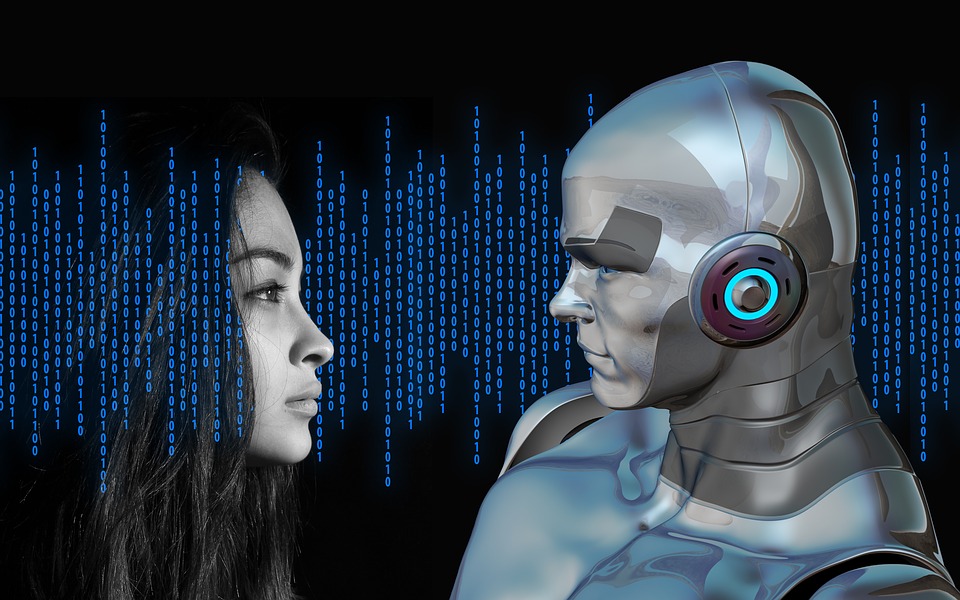A new year means new possibilities, especially when it comes to Artificial Intelligence (AI). In 2023, AI technology trends will be more present than ever.
We all want to stay competitive when it comes to technology, and this is especially true in the case of artificial intelligence. For this reason, the Australian Government has launched an AI Action Plan to be at the global forefront in the production and use of trustworthy, protected and responsible AI.
Although AI has been around for a long time, the potential for its application is growing exponentially. And this year we can expect to see some exciting new trends in the world of AI.
Here are the Top 10 AI Trends that will be Making Waves this Year:
1. An ethical and more responsible AI
For something as big as artificial intelligence technologies, it is important to think about its implications and possible consequences. Especially now that companies are offering AI as a service, there are more opportunities to harness the technology in ethically responsible ways.
Companies are hiring AI ethicists to ensure they use technology responsibly and create AI systems that are explainable, unbiased, and trustworthy. So we hope that by 2023 AI will be governed by a set of ethical principles to minimize any adverse or “black box” outcomes.
In addition, more regulations and laws will come into force to ensure that AI technologies are used for the benefit of society and not against it. If you plan to start the year with an AI startup, be sure to familiarize yourself with the latest ethical standards and guidelines.
2. Massive AI accessibility
Given the immense technology and value of AI, it is critical to ensure that everyone, from businesses and organizations to individuals, has access to its benefits. Fortunately, in 2023, more and more people will have access to artificial intelligence technology.
The democratization of AI is paving the way for more innovative and creative uses of the technology, while also making it more accessible to those who need it. In applications, whether in marketing or supply chain, we can already see the application of AI, but there are so many more on the way.
By taking this step, business leaders and organizations will be able to overcome the obstacles stemming from the AI skills gap caused by a lack of qualified data scientists and AI software engineers.
3. Increased accuracy with AI and predictive analytics
Many years ago, no one could predict future trends with the precision that is now possible with predictive analytics. By combining internal and external data with sophisticated statistical algorithms, it is able to offer comprehensive solutions.
In 2023, the accuracy of predictive analytics is expected to increase even further. Combining AI with predictive analytics will open up endless possibilities and allow organizations to make informed decisions based on accurate data.
This is especially important to help healthcare, manufacturing, and even financial institutions monitor performance and predict future results. It also helps to effectively manage cash flow, which can make a big difference for businesses of all sizes.
4. Unleash the power of generative AI
AI development is not only streamlining mundane and repetitive tasks with ease, it is also revolutionizing the creative industry. We have seen how OpenAI created GPT-3 and other variants, such as DALL-E, for image creation; these tools produce text and visuals nearly indistinguishable from those made by humans.
The growing branch of AI tools known as Generative AI is exciting. By 2023, it will be more entrenched in the creative industry and beyond, unleashing the potential of advanced AI-powered creativity.
In addition to natural language processing, Deepfake speech and imaging are also expected to improve this year. With the rise of synthetic data, companies can easily create audio and video content. Instead of spending time capturing images or voice for videos, simply input what you want your audience to see and hear into generative tools – AI will do the rest.
5. Work with AI for greater customer satisfaction
Healthcare, financial services, retail and hospitality – all industries need to offer their customers a seamless and enjoyable experience. This is where the AI comes into play.
Customer interactions are being enhanced to emulate human-like interactions with the help of AI, which works to deliver personalized and intelligent solutions. It will collect customer data and use it to anticipate their needs and preferences, providing a more personalized and comprehensive customer service experience.
In 2023, we can expect more AI-powered services and products to create a more effortless and enjoyable shopping experience. We’ve already seen it play an increasingly important role in our homes as AI-based virtual assistants become more widespread, but the time has come for AI to be integrated into all aspects of the customer experience.
6. No data is big with quantum AI
It is no longer necessary to have large volumes of data to obtain deep insights. Thanks to quantum computing, AI can now access and process vast amounts of data without much difficulty. In 2023, powerful quantum AI algorithms will enable organizations to gain deeper insights than ever before from massive data collection sets.
Organizations that already harness the power of quantum computing will have a significant advantage over those that do not. Patient data, analyses, product data, etc., can be easily processed to improve decision making.
More importantly, security systems will become more robust as the rise of current AI trends will be supported by quantum computing, providing greater protection and privacy.
7. The no-code revolution
Low-code or no-code tools are all the rage right now. In 2023, these tools will become even more popular and commonplace in the business world.
The development of applications and websites will be faster than ever, allowing companies to increase the availability of their products and services. By using this system, companies will save time and budget in the development process, allowing them to launch their product faster.
In addition, these no-code AI trends will also help boost the efficiency of internal processes, such as HR management or customer service, as these tools will help streamline daily activities.
8. AI for sustainability and environmental impact
Sustainability is a major concern that has been gaining visibility in recent years. In the cryptocurrency industry, steps have been taken to make their services energy efficient with Proof of Consumption.
In 2023, this trend of using AI for sustainability will emerge rapidly in the industry. It can also be used to address many other operations. It could use computer vision with satellite imagery to detect illegal logging and fishing activities that are affecting biodiversity both on land and at sea.
This year we have the opportunity to take advantage of artificial intelligence trends to advance environmental sustainability. By using AI with a focus on both business and human interests, we can create a better future for generations to come.
9. AI protects and secures data
Although intelligent automation is big in the AI game today, it doesn’t mean it doesn’t need security. Although there is no exact data on the number of people who are hacked each year, it is estimated that more than 2,200 cyberattacks occur daily.
In 2023, we can expect to see a greater emphasis on privacy and data protection as organizations become increasingly aware of the importance of keeping customer and organizational data secure. AI-based security solutions such as facial recognition, pattern recognition, motion detection, and image recognition will become increasingly common to protect data.
The virtual world is full of threats, and AI security is essential to keep data safe and secure. By 2023, AI-based security solutions will be the cornerstone of data protection in organizations.
10. Artificial intelligence is here to stay for the long term
AI has become the world’s main source of information and is a new tool that has been developed for global purposes. And this will not be the last time we talk about trends in artificial intelligence.
In the years to come, AI will become even more prevalent and pervasive throughout society, as we continue to find new ways to leverage business processes, automation, and as we’re seeing now, in the creative realm!
Some organizations are exploring the possibility of using AI Development to solve global challenges and bring about real change in society. Some examples are the use of AI and machine learning techniques to combat climate change, create better health systems and facilitate access to educational resources for all.
What will AI bring us in the Future?
In 2023, we will see more such systems that will complement or replace human creators in many areas. Video generation is under development, as is custom media creation. (“Siri, show me a 90-minute movie about a female CEO giving up her career to make her fortune as an actress, Steven Spielberg style.”)
However, despite the enormous advances and the fact that more and more companies use AI, there is still a lot of research to be done before we can produce fully general AI systems. In the coming years we will see new advances in models of self-supervised learning, continuous learning and task generalization. Future applications of language models with neural networks like BERT, for example, could enable human interaction in different languages and contexts. We are likely to get higher-quality data for languages used by smaller populations, and biases in AI systems can be more easily detected and removed. As a result, we can also expect AI chatbots like “ChatGPT” to become more human-like and more frequently used in schools and universities, for example.
In the coming years, we will see increased use of facial recognition for access control and security measures. China is one of the most prominent examples where the government has almost fully integrated facial recognition technology into their society. However, it remains to be seen if more countries will follow the Chinese lead, as this pervasiveness of AI in society is likely to raise privacy, surveillance and ethics issues.
Global revenue from AI business applications is expected to grow to a level of $31 billion by 2025. However, AI growth must be transparent and controlled to address privacy and ethical concerns. Therefore, governments and companies need to create AI laws today that guide the development of AI in the future.

